CPU performance
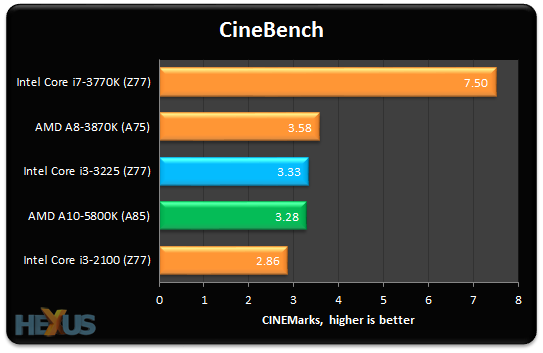
AMD's APUs should do better when all cores are stressed, you would think. Module-based Piledriver architecture flatters to deceive in CINEBENCH, too, as it falls behind the slower-clocked Stars core in Llano and marginally behind the two-core, four-threaded Core i3-3225.
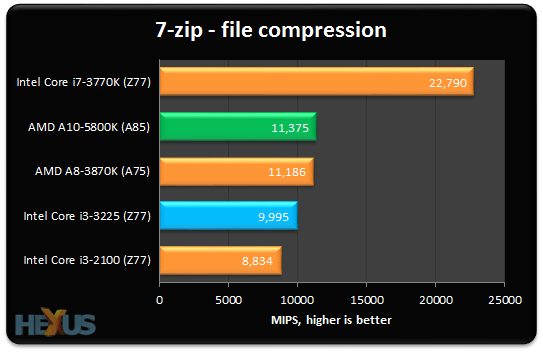
It's probably best to ignore the results for the £250 Core i7-3770K. It's an 'APU' insofar as it has graphics and CPU resources on a single die, but its price and speed make a mockery of the other £100 chips on show.
A10-5800K Trinity is a touch faster than Llano, making up for a lower per-MHz throughput by ramping up the clock to 4GHz or so.
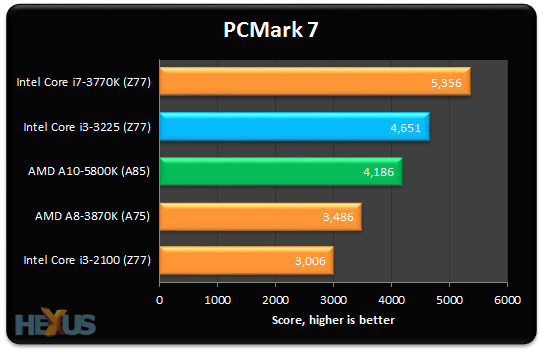
The all-round PCMark7 7 test's scores are heavily reliant on the quality of the integrated graphics. Trinity's HD 6000-series-dervied Radeon outdistances Llano's HD 5000 tech. The graph clearly shows that Intel, again, has a slight lead here.
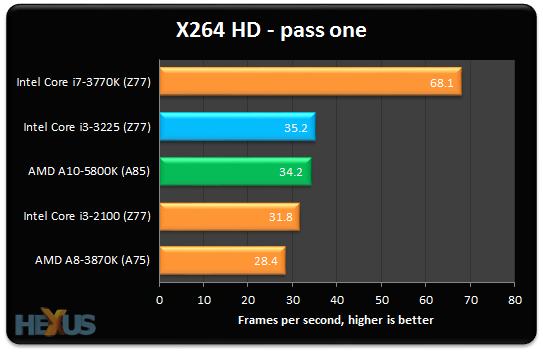
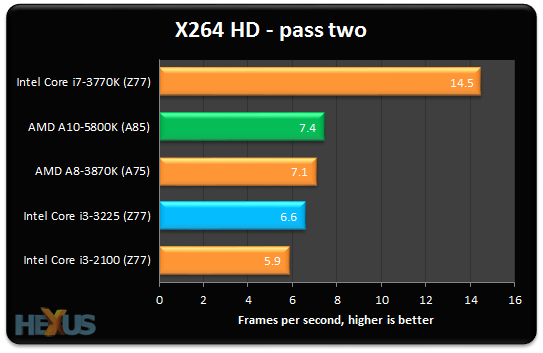
X264 HD's latest build really thrashes the CPU cores. Trinity is better than Llano but about the same speed as, you guessed it, Intel's Core i3-3225.
CPU benchmark summary
AMD's A10-5800K chip uses four Piledriver cores that, right now, don't offer significant leaps over the last-generation A8-3870K in most of our benchmarks. The one standout increase comes from the AES encryption/decryption test, where an improved instruction-set adds lots more perf.
The key aspect to remember here is that the £100 '5800K is generally competitive against the same-priced Intel Core i3-3225. Putting a real-world spin on it, the latest AMD APU is more than speedy enough for everyday tasks people would subject, say, a £500 PC to.









